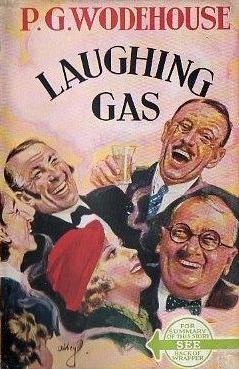
It seemed to Ransom that he had never looked out on such a frosty night. Pulsing with a brightness as with some unbearable pain or pleasure, clustered in pathless and countless multitudes, dreamlike in clarity, blazing in perfect blackness, the stars seized all his attention, troubled him, excited him, and drew him to a sitting position.
Yet another book that I love and haven’t read in a while is Out of the Silent Planet, first in C. S. Lewis’ science fiction trilogy. Perhaps the least noted of the three books, because it’s less lyrical/symphonic than Perelandra and less controversial than That Hideous Strength, it is nevertheless one of the great space travel books of the 1930s, and (I believe) a game-changer in the genre.
If you haven’t read it before, we meet our hero, philologist Elwin Ransom, out on a walking tour. Traveling later than he intended due to a disappointment in accommodations, Ransom encounters an old woman, weeping and searching for “her Henry.” Henry is her son, who is a little “simple.” Henry works at a nearby facility run by two rich men, one of them a university don. Hearing about this don, a colleague who might offer a night’s rest, Ransom offers to go look for the boy. He manages to get onto the facility grounds, where he sees two men trying subdue poor Henry, who cries out that he doesn’t want to go “in there.” Ransom interferes, enabling the boy to escape. Then he finds that one of the men is in fact someone he knows (and has always disliked), a man named Devine, once a scholar, now a businessman. He introduces his colleague Weston, a world-famous physicist. After some initial unpleasantness, Ransom is indeed invited in to spend the night.
What he doesn’t know is that Devine and Weston are planning a trip to “Malacandra” (Mars). They’ve been there before, and encountered creatures called Sorns. The Sorns asked them to bring them someone “of their own kind.” Assuming the Sorns want a human sacrifice, they’d intended to use poor Henry. But if Ransom insists on interfering, he’ll do just as well.
So soon Ransom finds himself on a spherical spacecraft, headed to Mars. He finds space (wonderfully) different from what he expected. Once he’s arrived on Malacandra (brilliantly imagined according to the scientific knowledge of the time), he gets free from his captors and soon encounters a “Hrossa,” one of the three indigenous sapient species. Again and again, what he finds confounds his presumptions and expectations. Aliens aren’t what he expects, the universe isn’t what he expects, and at last he even gets an objective look at humanity itself, through alien eyes. Then finally through Eyes even more alien.
I’m not an expert on Science Fiction in the 1930s-40s period, but my impression (reinforced by references in this book) is that the common assumption in the field was that aliens were either hostile super-intellects or primitives. Lewis lampoons this latter view in the character of Weston, who gives a ridiculous, patronizing, “me give-um you pretty beads” speech to an Intelligence infinitely above his comprehension. It’s a brilliant satirical scene, and – I suspect – stories like “Avatar” may be the distant descendants of this seminal book.
It goes without saying that I recommend Out of the Silent Planet unreservedly.








